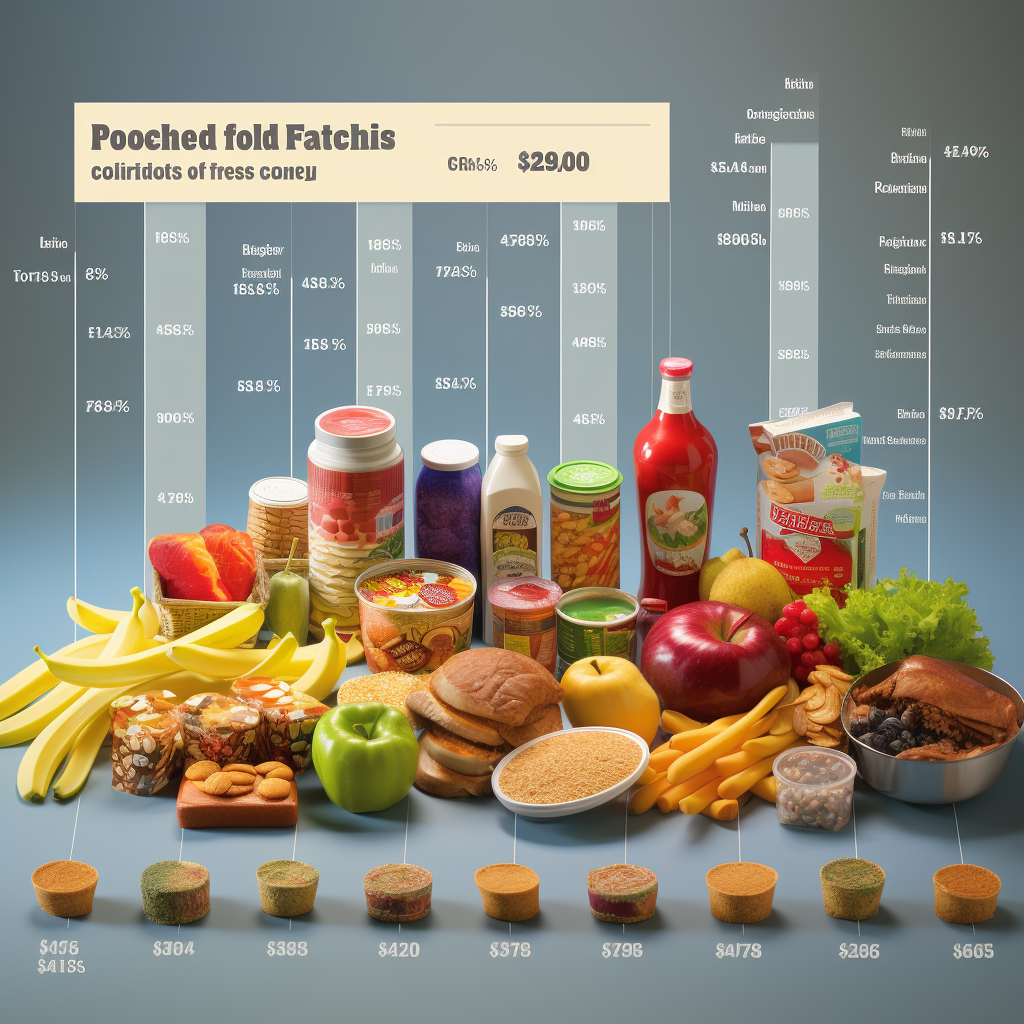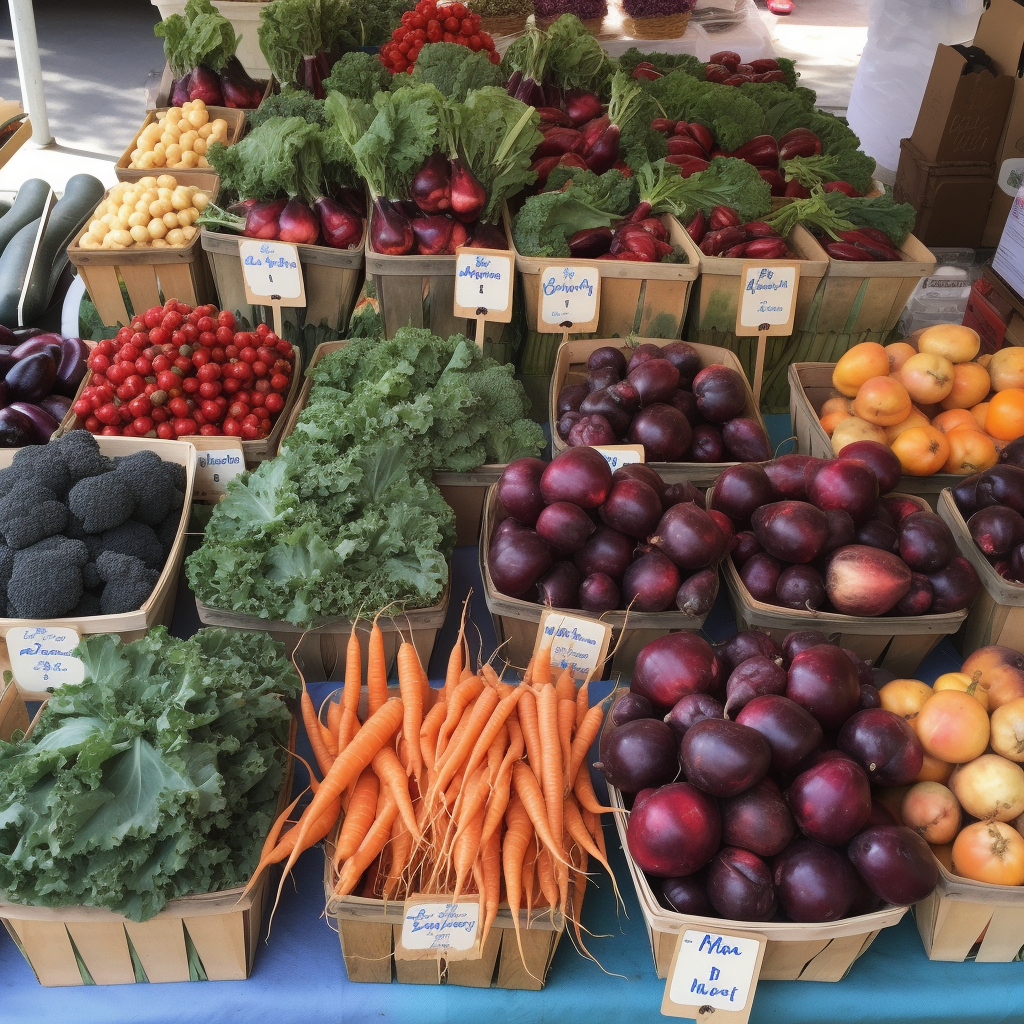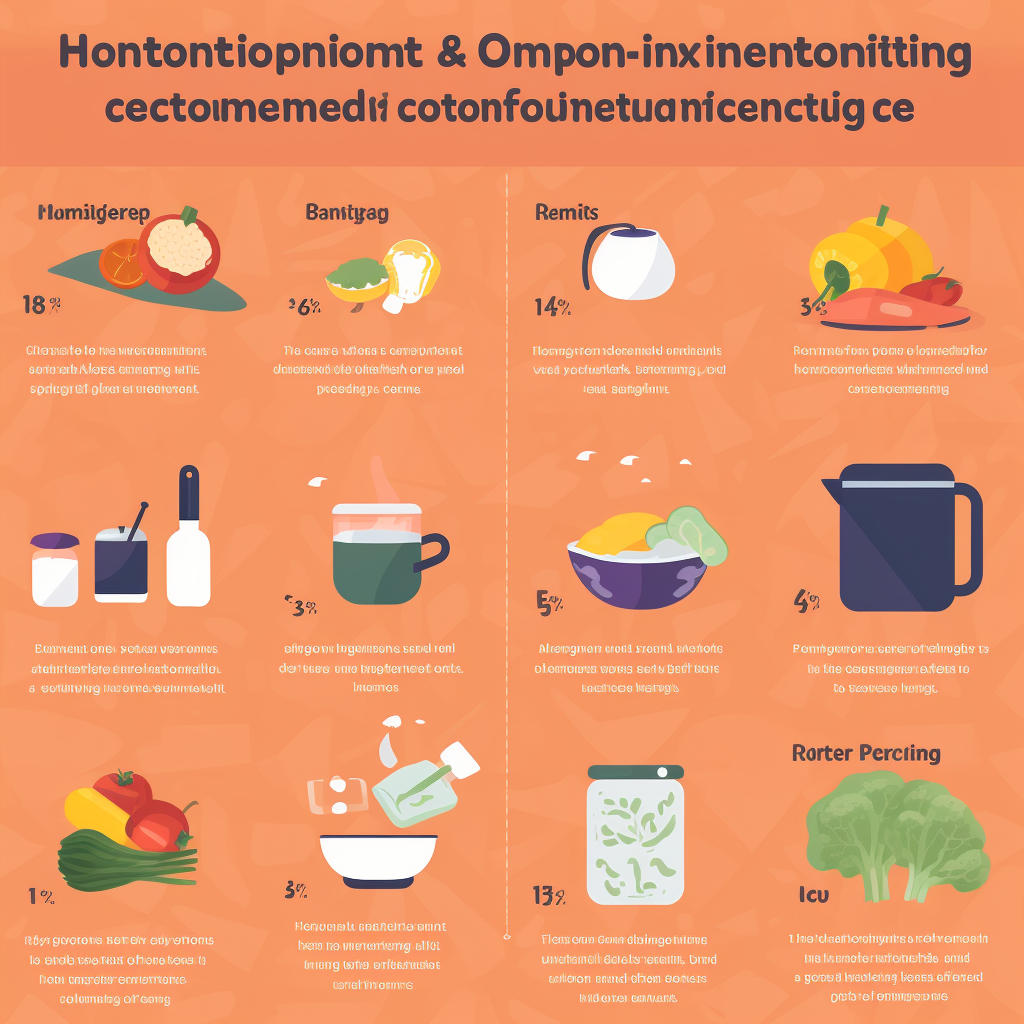Part 1 – The Myth of Expensive Healthy Eating and Your Guide to Budget-Friendly Nutrition
Eating healthily remains a dream for many, particularly due to the prevailing myth that nutritive eating is extravagant. Sadly, this misconception leads many to opt for cheap, immediate gratification from processed foods. But can we really enjoy nutritious diets on a budget? Absolutely! Welcome to the first part of our series uncovering the secrets to enjoying a flavorful, healthy diet without draining your pockets! Whether you’re a cash-strapped student, a busy worker, or simply someone wanting to save while eating well, this guide is for you.
Unmasking the Myth: The Price Tag of Healthy Eating

There’s a prevailing misconception that health equals expensive and that processed foods are the cheap route to survival. A closer look, however, reveals the long-term impact of these ‘cheap’ foods on our wellbeing and finances. While processed foods may seem budget-friendly in the short term, they pose long-term health risks that can eventually empty your wallet. On the contrary, nutritious diets featuring fruits, vegetables, whole grains, and lean proteins may seem costlier upfront but their long-term health benefits outweigh their cost. The “Super Size Me” documentary, demonstrating the harmful effects of endless fast-food consumption, perfectly highlighted this ironic cost comparison. Bottom Line? A healthy diet isn’t synonymous with extravagant spending. With the right strategies, you can achieve a nutritious eating plan tailored to your budget. For guidance, utilize the myriad of resources offered by government health organizations.
The Power of Meal Planning: Healthy Eating on A Budget
One of the key strategies for cost-effective nutrition is meal planning. This involves strategizing your purchases based on a predetermined eating plan. Remember the saying, “Failing to plan is planning to fail?” Here’s how robust meal planning can aid your health and finances. In this part of our series, we’ll explore how a combination of strategic meal planning, smart shopping, and decent culinary skills can drive the impression of posh diets only the wealthy enjoy, right out the window.
Menu Mapping: Your Route to A Healthy, Economical Diet

Whoever said that impulsive decisions could be detrimental hit the nail right on the head. Being unprepared paves the way for unhealthy and oftentimes costly, immediate food choices. Surrendering to the allure of convenient fast foods might seem harmless, but remember, it invites hidden expenses like elevated cholesterol and potential weight gain, evidence of which can be seen in the documentary Super Size Me.
Map out your meals in advance and enjoy the reins of your diet, orchestrating healthier, home-cooked meals which comply with dietary guidelines and curtail unnecessary expenditures on junk food and dining out.
Harvesting Health: Benefits of Local and Seasonal Produce

When charting your courses vis-a-vis meals, lean towards balance: An ample supply of fruits and vegetables, reinforced with whole grains and lean proteins. Keep to the recommendations set forth by dependable health bodies like the US Department of Health. List down affordable ingredients, ones that can be used in various recipes to ensure no wastage. Intelligent meal portions also help prevent overcooking, thus saving costs. Swing by your local farmers’ markets and enjoy the bounty they offer. Seasonal and locally sourced produce comes with many benefits. They’re not only cheaper and spanking fresh, but also taste better and pack more nutrients.
Shop Smart, Save Big

Revamp your grocery shopping game! Being cognizant about what and how you buy can significantly lighten the load on your wallet, all without compromising taste or health. When you’re out shopping, skip the fancy brand names. Opt for less expensive generic brands that offer comparable in terms of quality and nutrition. Also, consider buying staples in bulk for more savings. But remember, don’t get carried away by sales, shopping intentionally is the key. Prioritize healthy options advised by authoritative resources like Healthy diet – Wikipedia. Understand that processed foods might be ubiquitous, but your home’s kitchen is a portal to a world of healthy, economical, and exciting meals waiting to come to life.
Cooking at Home: Your Secret Weapon
With the rush of modern life, it is easy to get lured by the expediency of eating out or ordering in, but it’s important to remember nothing beats a home-cooked meal. Not just for the incredible savings – restaurant meals can cost about five times than that of a home-cooked meal, but also for retaining complete control over our nutritional intake. Whole, fresh, nutritious foods like fruits, vegetables, and grains, especially when in-season, can impact your health positively benefit without wreaking havoc on your finances. Plus, opting for plant-based proteins such as lentils, beans, or tofu can further cut costs, one of many interesting insights from the documentary “What the Health”. Yes, healthy eating can be delicious. Techniques like grilling, roasting, or steaming enhance flavors; herbs and spices can bring a robust profile to any meal, negating the need for high-calorie condiments. Add to these practices the strategic use of leftovers by repurposing them into tantalizingly new dishes – saving time, effort, and money, and you’ve got yourself an unbeatable plan for healthy, budget-friendly eating! In the finale of this informative series, we’ll explore how proper organization and better lifestyle habits can lead to a healthier wallet and waistline. Stay tuned!
2022 updates: Keep up with Changing Trends and Developments

In the world of healthy eating on a budget, we have witnessed some interesting trends that may sway your strategies.
The rise of plant-based eating: Aren’t we lucky to live in a time when plant-based diets are not just fashionable, but also incredibly affordable? With a plethora of heart-healthy, environment-friendly plant proteins like beans, lentils, tofu, and tempeh available at wallet-friendly prices, it’s time to think beyond the animal protein box.
The People-Powered CSA Movement: Did you know you can get fresh, seasonal local produce without breaking the bank? Community Supported Agriculture (CSA) offers members an opportunity to buy a season’s share of a farm’s harvest in advance. This is a brilliant way to save on food costs and enjoy an assortment of nutrient-rich fruits and veggies all year long.
From Luxury to Everyday – Affordable Healthy Foods: The food market has evolved, allowing access to great quality, healthy food options that do not always pinch your pocket. Several grocery stores have introduced their own lines of healthy foods that rival name-brand counterparts in quality but win hands down on price. Coupled with meal delivery services and meal kits gaining momentum, eating healthy without burning a hole in the pocket is more possible now than ever before.
Navigating the Inflation Impact and New Dietary Guidelines
The recent months have not been kind to our wallets, with the cost of food items steadily increasing due to inflation and geopolitical factors. Nonetheless, with efficient planning and smart shopping ethos, you can continue to enjoy wholesome meals on a budget. Here are a few tricks of the trade:
- Keep it real with whole, unprocessed foods.
- Bulk buying can be your savior.
- Become best friends with your kitchen. Home cooking is the MVP!
- Sales and coupons are your allies. Use them wisely. New dietary guidelines have also been released, reinforcing the merit in focusing on a variety of nutrient-rich foods from all the food groups. They reiterate an old golden rule – avoid processed foods. It is more important than ever to stick to healthy hydrating options and restrict the intake of unhealthy fats.
Take Home Message
- Choose whole, unprocessed foods for their nutrition and affordability.
- Home cooking saves money and puts you in control of your meals.
- Maximize use of sales and coupons for further savings.
- Embrace the power of plants – nutritious, affordable staples for a wholesome meal.
- Don’t shy away from experimenting! Get creative with bargain buys and ace that budget! In the grand scheme of health and savings, there is always room for improvisation. We hope you find these tips helpful and implement changes to discover the joy of healthy eating within your budget. Let’s cook up a storm and taste the wellness one meal at a time!
